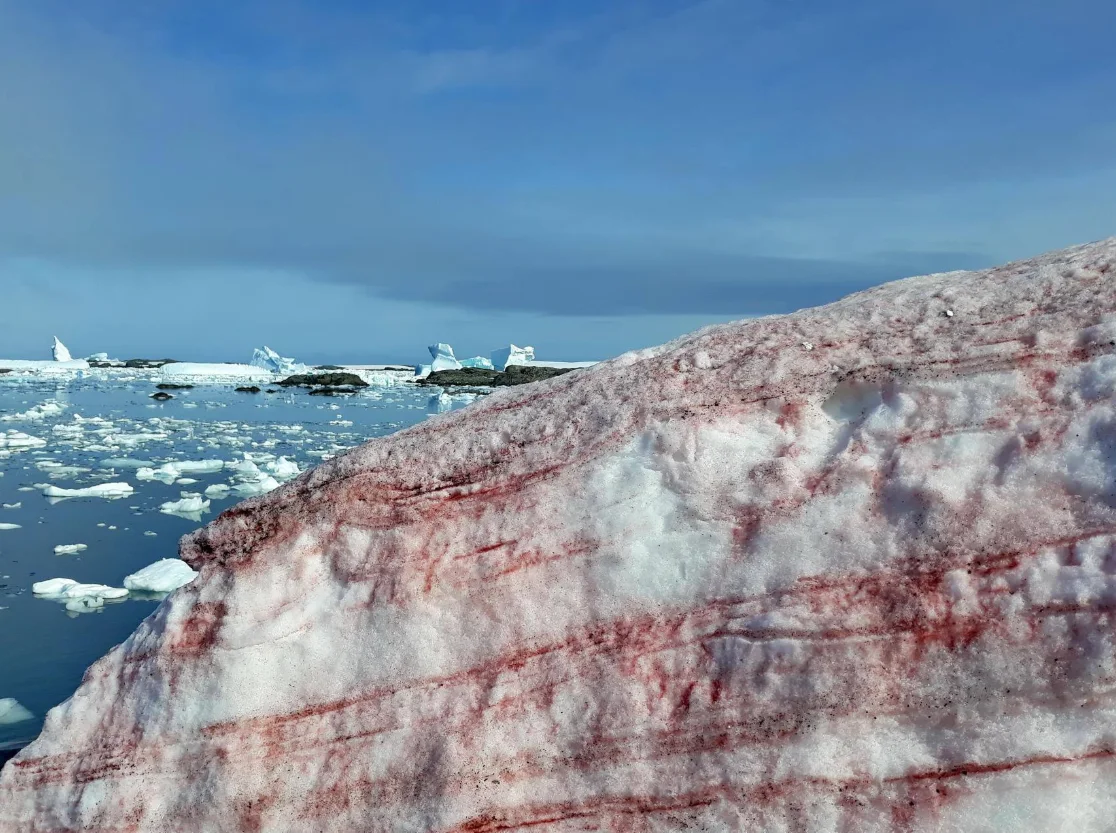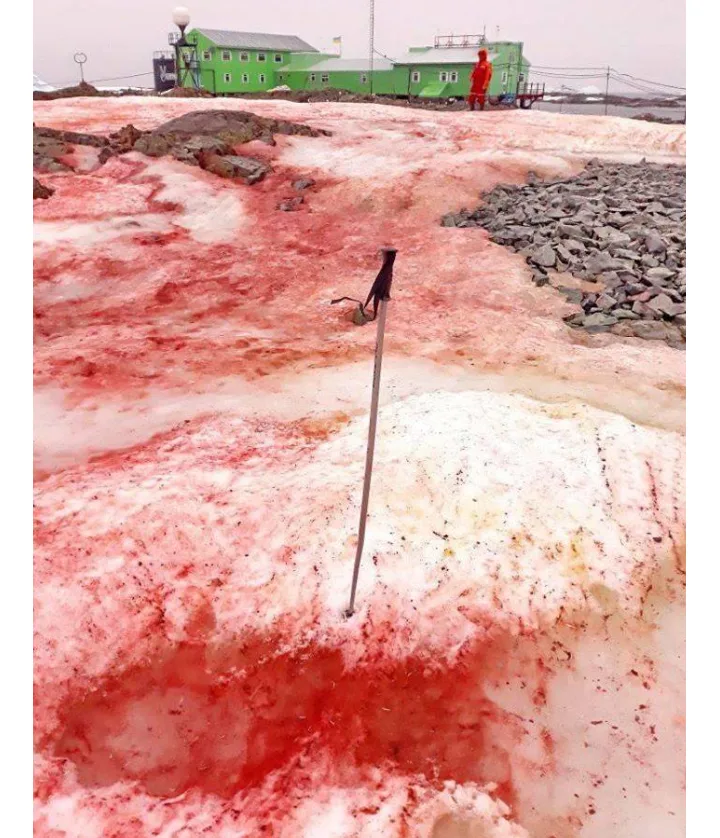
'Blood snow' appears on Antarctic Peninsula
Here's what causes this chilling phenomenon.
It's summer in Antarctica, and a combination of high temperatures and melting snow have created the perfect environment for blood snow to show up on the Antarctic Peninsula.
The phenomenon is also sometimes referred to as 'watermelon snow' because it has a slightly sweet smell that's reminiscent of watermelons.
A recent Facebook post by the Ministry of Education and Science Ukraine shows the landscape dotted with splashes of crimson.

Courtesy: Andrey Zotov, Ministry of Education and Science of Ukraine/Facebook
The red hues aren't snow. It's the result of pigmented alga that lies dormant during the winter and blooms when melting occurs.
The pigments absorb heat and act like a 'natural sunscreen', protecting the algae from UV light. While that's great for the algae, it's not great for the snow and ice around it. The more heat it absorbs, the faster the snow around it melts.

Courtesy: Andrey Zotov, Ministry of Education and Science of Ukraine/Facebook
More melting allows the algae to spread which, in turn, leads to more melting.
"Snow blossoms contribute to climate change," the research team wrote on the Facebook post.
"Because of the red-crimson color, the snow reflects less sunlight and melts faster. As a consequence, it produces more and more bright algae."
One more thing to know: while watermelon snow may smell sweet, experts warn against eating it. That's because it could contain dirt and bacteria that could make humans and animals sick.











